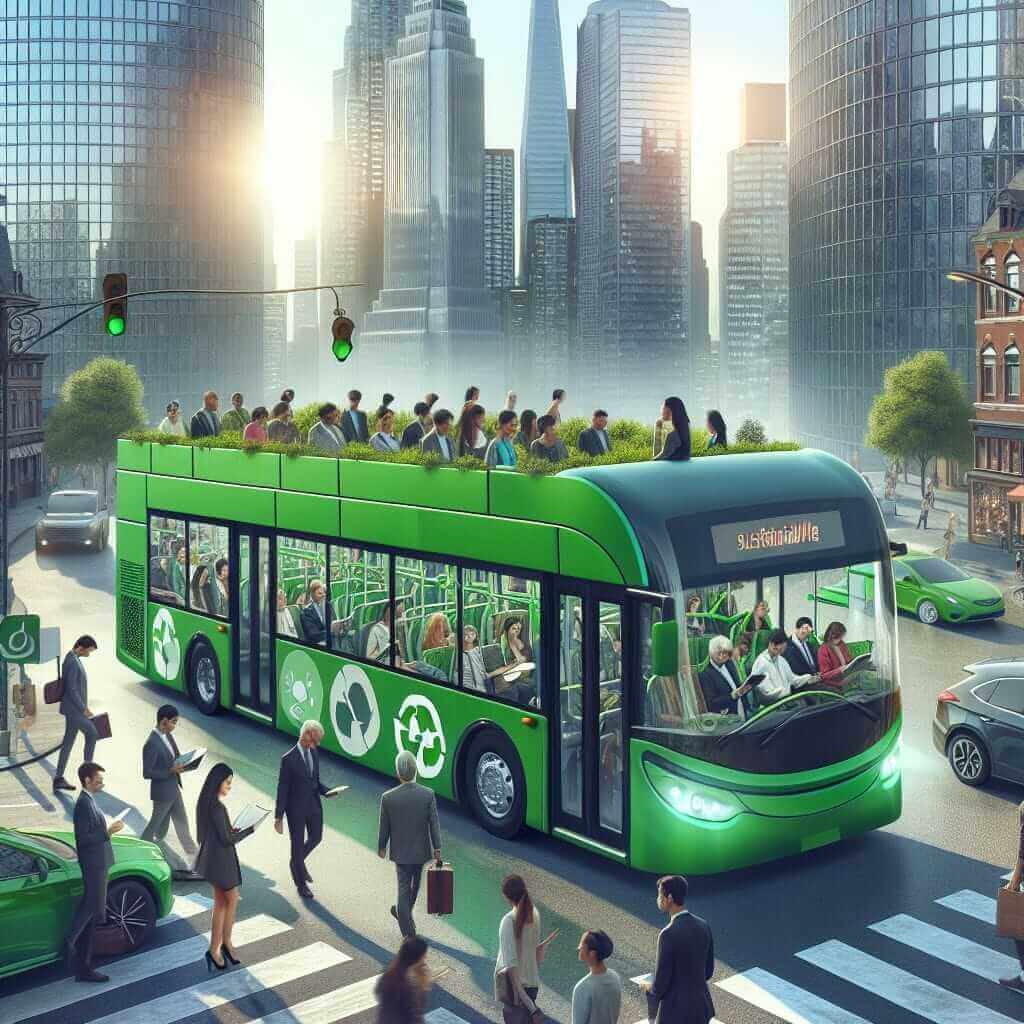The topic of “The role of public transportation in reducing carbon emissions” has been increasingly discussed in IELTS Writing Task 2 exams. Given the global concern for climate change and sustainability, understanding how public transportation can mitigate carbon emissions is crucial. This topic has appeared in various forms in recent tests, making it a relevant and potentially recurring question.
Example Past IELTS Exam Questions:
- “To what extent do you agree or disagree that public transportation is the most effective way to reduce carbon emissions?”
- “Discuss the advantages and disadvantages of using public transportation to combat climate change.”
Sample IELTS Writing Task 2 Question
“Some believe that increased usage of public transportation is key to reducing carbon emissions. To what extent do you agree or disagree?”
Analyzing the Question
This is an opinion essay where you are asked to discuss the extent to which you agree or disagree with the statement. You need to evaluate the effectiveness of public transportation in reducing carbon emissions and provide a balanced argument.
Sample Essay
In contemporary society, climate change is a critical issue, prompting a debate on the most effective means to reduce carbon emissions. One suggested solution is the increased use of public transportation. I agree that public transportation can significantly contribute to lowering carbon emissions, though other measures are also necessary.
Public transportation undeniably plays a pivotal role in reducing carbon emissions. Buses and trains, when operating at full capacity, emit significantly less greenhouse gases per capita compared to private vehicles. For instance, a single bus can replace up to 50 cars on the road, thereby substantially cutting the total emissions. Moreover, advances in technology have led to the development of eco-friendly electric buses and trains, which further diminish their carbon footprint.
Furthermore, promoting public transportation encourages a cultural shift towards more sustainable living. When people regularly use public transit, they become more conscious of their environmental impact. This can lead to broader acceptance and implementation of green policies, such as carpooling and cycling, thus amplifying the overall reduction in carbon emissions.
However, solely relying on public transportation is insufficient. Infrastructural development and innovation are also crucial. Urban planning must integrate extensive and efficient public transit networks to minimize reliance on personal vehicles. Additionally, incentivizing the use of renewable energy sources for public transit systems is vital.
In conclusion, while the adoption of public transportation is a crucial step in reducing carbon emissions, it must be part of a multifaceted approach. Investments in infrastructure, technological advancements, and public awareness are equally important to combat climate change effectively.
Word count: 256

Key Points to Remember When Writing
- Balanced Argument: Always present both sides of the argument and provide reasons for your stance.
- Use of Examples: Real-life examples and data make your argument stronger and more convincing.
- Clear Structure: Follow the standard structure of introduction, body paragraphs, and conclusion.
Vocabulary to Remember
- Pivotal (adj) /ˈpɪv.ə.təl/: Central or vital to something.
- Example: Public transportation is pivotal in the reduction of carbon emissions.
- Greenhouse gases (noun phrase) /ˈɡriːn.haʊs ˌɡæsɪz/: Gases that trap heat in the atmosphere, leading to global warming.
- Example: Buses emit significantly less greenhouse gases compared to cars.
- Eco-friendly (adj) /ˌiː.kəʊˈfrend.li/: Not harmful to the environment.
- Example: Eco-friendly buses have a minimal carbon footprint.
- Incentivize (verb) /ɪnˈsen.tɪ.vaɪz/: To provide someone with a reason or incentive to do something.
- Example: Governments should incentivize the use of renewable energy.
- Sustainable (adj) /səˈsteɪ.nə.bəl/: Able to be maintained at a certain rate or level, particularly without causing environmental degradation.
- Example: Public transportation promotes sustainable living.
Conclusion
Public transportation plays a vital role in reducing carbon emissions and should be incorporated into broader strategies for combating climate change. Future IELTS essays may feature similar topics requiring an analysis of different methods to address environmental issues, making it essential for students to familiarize themselves with these concepts.
Additional Practice Questions
- “Discuss the role of public transportation in reducing urban pollution.”
- “Evaluate the effectiveness of public transportation in sustainable development.”
- “What are the advantages and disadvantages of electric public transportation?”
By practicing these topics, candidates can enhance their ability to tackle a range of questions related to public transportation and environmental sustainability.